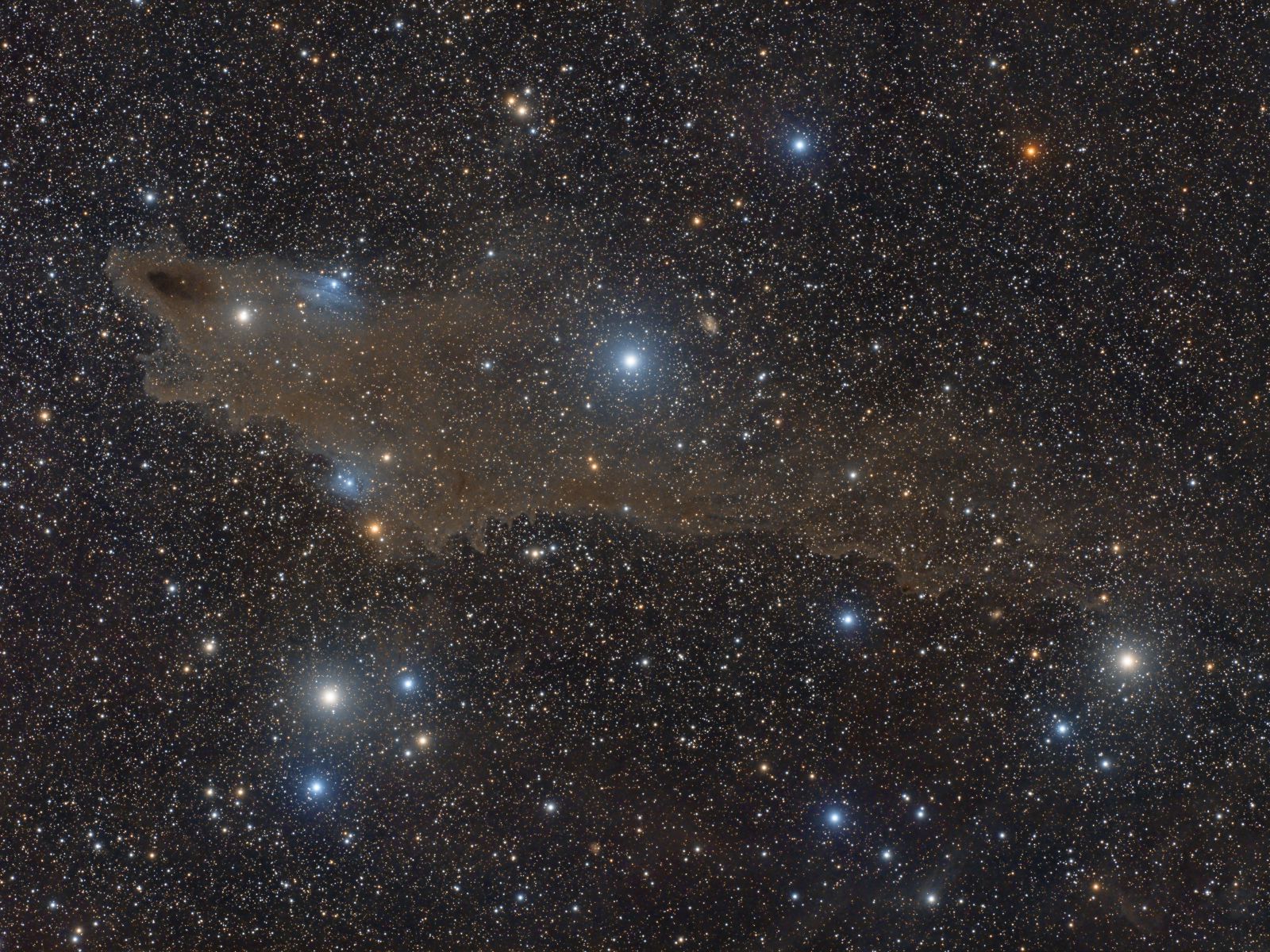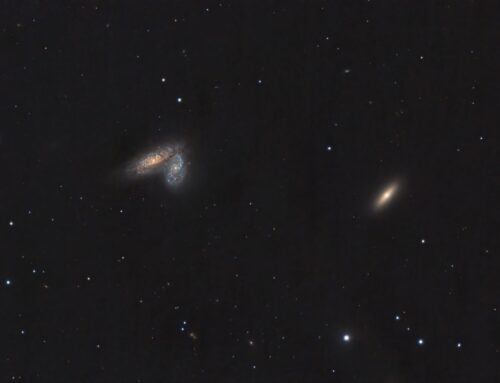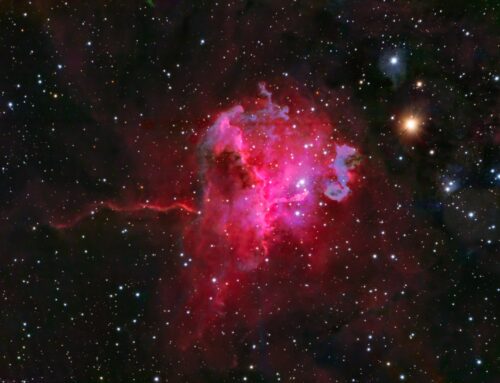Dark Shark
 Click image for full size version
Click image for full size version
September 13, 2020
This image shows the Dark Shark, a complex of several objects in Cepheus, located around 650 light years from us, and about 15 light years from snout to tail. The brownish portion is part of a large molecular cloud thought to be glowing dust powered by high-energy starlight. LDN 1235 is the dark spot in the shark’s head. vdB 149 and 150 are the two blue reflection nebulae at the top and bottom of the shark’s neck. Little spiral galaxy PGC 67671 appears to sit behind the dorsal fin, but it is far in the background at around 58 million light years distance. Several other galaxies grace the field; I prepared an annotated image that identifies their locations.
Tekkies:
Acquisition, focusing, and control of Paramount MX mount (unguided) with TheSkyX. Focus with Optec DirectSync motor and controller. Automation with CCDCommander. Equipment control with PrimaLuce Labs Eagle 3 Pro computer. All pre-processing and processing in PixInsight. Acquired from my SkyShed in Guelph. Average transparency and average seeing. Data acquired August 2–26, 2020 under a moonless sky.
Takahashi FSQ-106 ED IV @ f/3.6 and QHY367C one-shot colour camera with Optolong UV/IR filter
Data Reduction and Initial Processing
Preprocessing: The WeightedBatchPreProcessing script was used to create registered files. ImageIntegration followed by DrizzleIntegration (with CFA Drizzle option and scale of 1x) was used to make the colour master.
Gradient Removal: DBE was applied to the master using Subtraction.
Luminance Extraction: RGBWorkingSpace was used to equalize the luminance colour channels prior to extracting CIE L* luminance.
Colour
Colour Balancing: Colour was balanced with ColorCalibration.
Linear Noise Reduction: MultiscaleLinearTransform was used to reduce noise in the background areas, using an internal mask to protect bright structures. Layer settings for threshold and strength: Layer 1: 5.0 0.85, 2 iterations; Layer 2: 3.5, 0.75, 2 iterations.
Stretching: HistogramTransformation was applied to make a pleasing, bright image, with background set to an intensity of approximately 0.10.
Luminance
Deconvolution: A star mask was made to use as a Local Deringing Support image. A copy of the luminance image was stretched to use as a range mask. Deconvolution was applied (80 iterations, regularized Richardson-Lucy, external PSF made using PSFImage script with about 30 stars).
Linear Noise Reduction: MultiscaleLinearTransform was used to reduce noise in the background areas, using an internal mask to protect bright stars. Layer settings for threshold and strength: Layer 1: 3.0 0.85, 1 iterations; Layer 2: 2.0, 0.75, 2 iterations.
Stretching: HistogramTransformation was applied to make a pleasing, bright image, with background set to an intensity of approximately 0.10.
Combining Lightness and Colour Images
LRGB Combination: The lightness image was applied to the RGB image using LRGBCombination with default settings.
Additional Processing
Nonlinear Noise Reduction: TGVDenoise was used in L*a*b* mode to reduce noise with a mask used to target the background areas and protect the stars (max. 1,000 iterations and convergence selected for both lightness and chrominance).
Final Steps: ExponentialTransformation was applied to boost faint nebulosity using a mask to protect stars. Background and star brightness, contrast, and colour saturation were adjusted in several iterations using CurvesTransformation with masks as required. ICCProfileTransformation (sRGB IEC61966-2.1; Relative Colorimetric with black point compensation) was applied prior to saving in jpg format.






absolutely stunning image
Thank you Dawn!